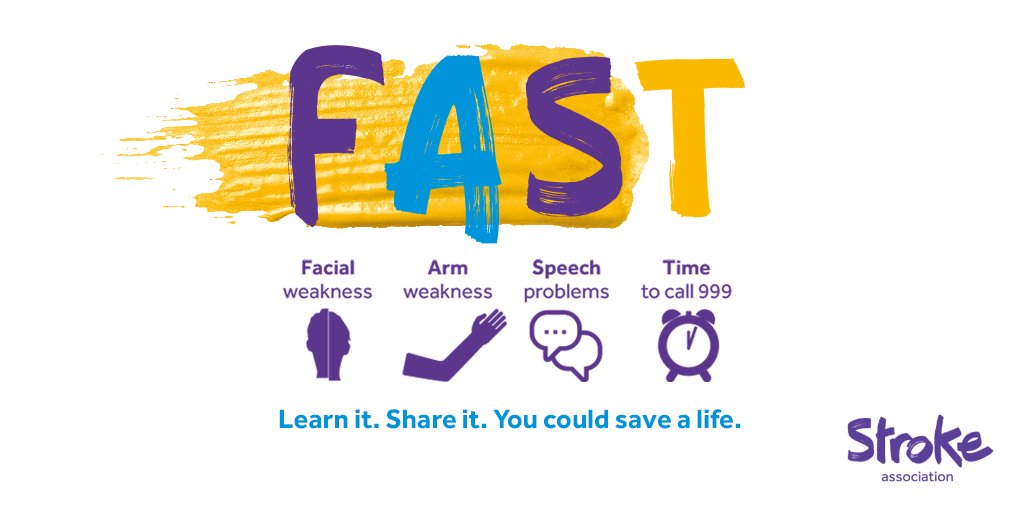Why fewer, more specialist stroke units are saving lives
In this week’s blog post, Dr Arindam Kar, consultant stroke physician at Imperial College Healthcare NHS Trust, explains how the Trust’s stroke service works and why we helped to consolidate specialist stroke services across London.
The fifth episode of Hospital on BBC Two features stroke care, a specialism where service models and treatments have changed very significantly over the past decade, with big improvements for patients.

Towards the start of the episode we meet Gerry just after he suffers a stroke, and the signs and symptoms are evident: facial weakness, arm weakness and speech problems. These caused his family to act fast and get him to our accident and emergency department at Charing Cross Hospital. He was investigated by our emergency stroke team and admitted to our hyper acute stroke unit (HASU) for immediate treatment. As you’ll see later in the episode, patients may also be transferred to our HASU from other hospitals within our Trust or from nearby trusts. London Ambulance Service will also bring patients who have suffered a stroke in our part of London directly to our HASU even if there are other hospitals closer.
This is because in 2010, acute stroke services in London were centralised into eight hyper acute stroke units – ours is one of them. Strokes require fast action, but the treatment of a stroke requires vast resources – both human and technical. Our hyper acute stroke unit is staffed by a team of 50, including consultants, junior doctors, nurses and healthcare assistants. In recent years, leading clinicians have recommended the centralisation of acute stroke units in order to concentrate the precious resources required to treat strokes effectively. A study published in the BMJ in 2014 found that the centralisation of stroke services in London saves the lives of around 96 patients each year. It has also reduced average length of stay and improved patient satisfaction.
When a patient arrives at our HASU, our team first carries out investigations to confirm that he or she is suffering a stroke and to determine the cause as this will determine the right treatment. In Gerry’s case, a clot is cutting off the supply of blood to his brain – Gerry is having an ischaemic stroke. A hemorrhagic stroke is caused by a brain haemorrhage, or bleeding in or around the brain. Strokes may also be temporary – a transient ischaemic attack (TIA) or mini-stroke is triggered by a temporary blockage of blood to the brain, so the symptoms do not last.
Once we confirm that the patient is having a stroke and determine what type it is, we set out to treat it. We may be able to give the patient a clot-busting treatment called thrombolysis. This is an injection of medicine that breaks up blood clots in arteries in the brain. In the episode, we determine that thrombolysis is a suitable treatment for Gerry and after discussing the benefits and risks with his wife, we administer the injection. Within the first hour, Gerry’s symptoms begin to improve.
But thrombolysis needs to be given within four and a half hours of stroke symptoms starting – due to this and other factors such as medical history and circumstances of stroke, at present approximately 12 per cent of people who are admitted to hospital with a stroke are eligible to receive thrombolysis. We can only determine a patient’s eligibility through quick but thorough investigation.
We also treat some strokes with thrombectomy, a procedure that involves threading a catheter into the brain, usually via a large vein in the groin, and removing the clot either by sucking it out or grabbing it with a special stent. Removing the clot restores blood flow to the affected part of the brain, preventing or reducing the size of the stroke. Ten to 20 per cent of strokes are due to blockage of a major brain artery – thrombectomy may be appropriate for many of these patients.
In Hospital, you see a thrombectomy performed at Charing Cross Hospital on John, a patient transferred from Hammersmith Hospital, where he was being treated by a specialist cardiac team. This is because thrombectomy is a highly specialised procedure that should only be undertaken at a neurological specialist centre like Charing Cross Hospital, according to professional recommendations from the National Institute for Health and Care Excellence (NICE).
Thrombolysis is the main treatment for strokes and is offered to all suitable patients who attend Charing Cross HASU 24 hours a day, seven days a week. Thrombectomies are a more recent development in the treatment of stroke which we have introduced as an innovation, currently just during normal working hours. In collaboration with other NHS providers, we are working to expand the thrombectomy service to a 24/7 service and make it available to a larger catchment area so more patients can benefit.
We admit over 1,700 patients to the HASU each year – most have ischaemic strokes; a smaller number have brain haemorrhages, mini-strokes or other conditions. Around 70 per cent of our patients are over 65 years old. Most will spend about 72 hours – three days – on our HASU before being ‘stepped down’ to a less intensive ward for their continued care and rehabilitation. Some patients will move to a stroke recovery ward at Charing Cross Hospital; others will be transferred to a hospital closer to their home; still others may return home with a plan of support in place.
When it comes to stroke, the most powerful intervention is direct admission to a specialist stroke unit – patients who receive this intervention have far better outcomes. This is likely due to a combination of factors, including the presence of expert nurses and doctors who specialise in stroke and fast access to resources for essential investigations and interventions. For patients like those in Hospital, a HASU can make all the difference.
FAST image provided by the Stroke Association. Learn more about Hospital on BBC Two.


